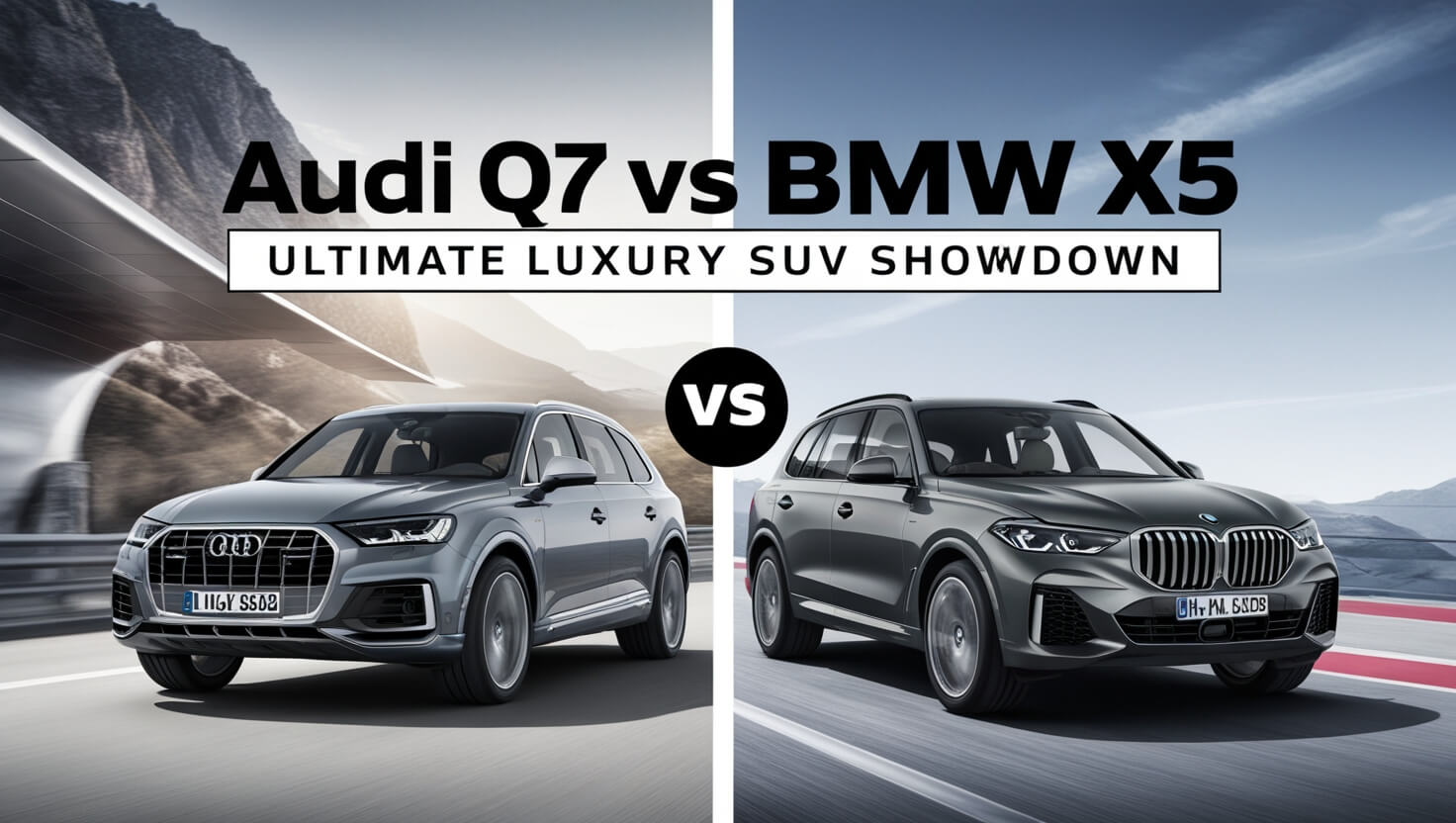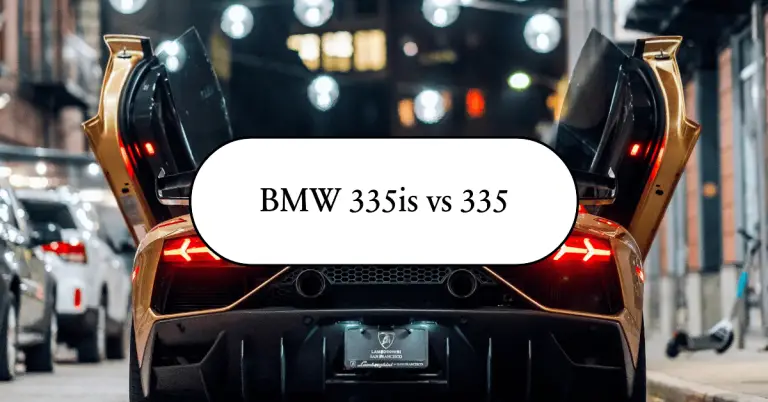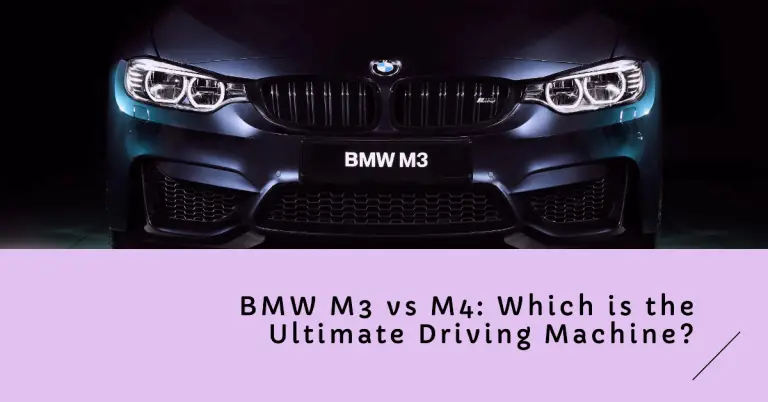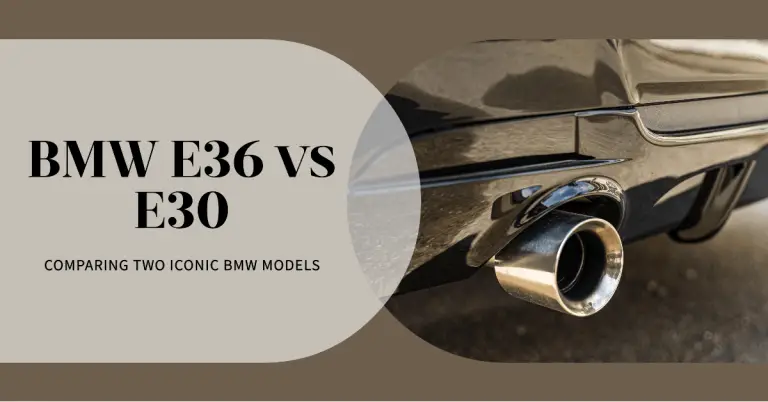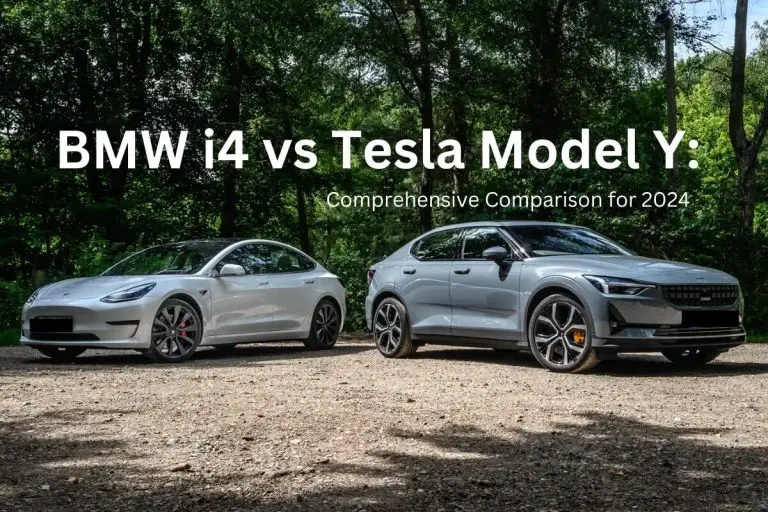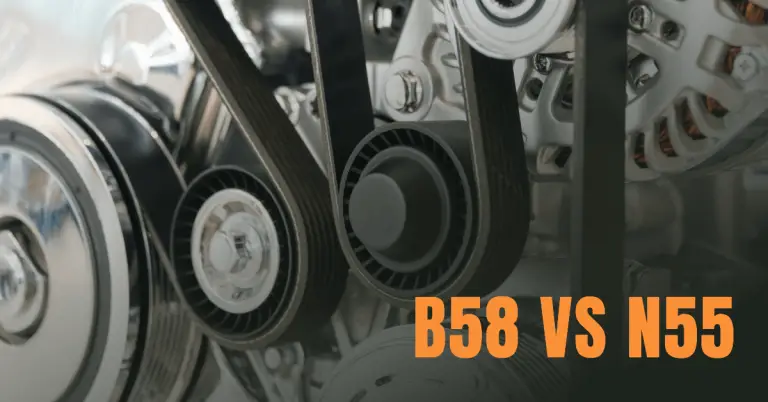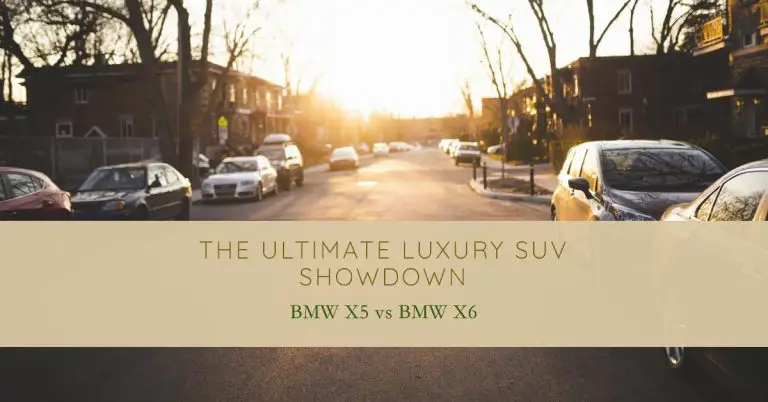Audi Q7 vs BMW X5: Ultimate Luxury SUV Showdown
For buyers seeking the perfect blend of power, refinement, and capabilities in a family-friendly SUV package, two German titans often rise to the top – the Audi Q7 and BMW X5. These luxury models have long set the standards for upscale appointments and engaging driving dynamics in their class.
But which one deserves the crown as the ultimate luxury SUV?
The BMW X5 takes the edge for those prioritizing thrilling performance and handling prowess, while the Audi Q7 is the more well-rounded choice for buyers needing a spacious three-row cabin and superior towing capabilities.
To decide which SUV is the ideal fit for your lifestyle and driving tastes, this in-depth comparison will evaluate the Q7 and X5 across all the critical areas – styling, performance, interior amenities, safety ratings, pricing and more. Let’s dive in and explore these premium SUVs from every angle.
Exterior Design: Elegant Sophistication vs Bold Sportiness
When it comes to curb appeal, the Audi Q7 and BMW X5 take distinctly different design approaches that reflect their respective brand personalities.
The Q7 exudes understated sophistication through its sleek bodylines and refined styling cues. The large trapezoidal grille and crisp LED lighting elements give it a commanding yet classy road presence. Despite its sizable dimensions, the Q7 appears lean and sculptured from any angle.
In contrast, the BMW X5 makes an unmistakably bold statement with its aggressive, muscular design language. The oversized kidney grilles, sculpted hood, and angled front airdam give the X5 an unmistakably sporty and dynamic visual flair. Its wide rear haunches and sloping roofline further reinforce the athletic aesthetic.
While the Q7’s styling is more elegant and timeless, the X5’s brash look certainly turns more heads and appeals to those wanting an SUV with an overtly sporty persona.
In terms of size, the Audi Q7 has a longer overall body, measuring 199.3 inches compared to the X5’s 194.3-inch length. The BMW counters with a slightly wider stance at 78.9 inches vs the 77.6-inch width of the Q7. This allows for a more spacious cabin in the Q7 while the X5 has a more planted and aggressive road stance.
Interior Accommodations: Space and Simplicity vs Driver Focus
The battle between these luxury SUVs sees a role reversal when it comes to interior design and layout priorities. The Audi Q7 emphasizes simplicity and efficiently utilizing its generous cabin space, while BMW’s X5 interior is tailored more towards the driving experience.
Audi’s design philosophy of minimalist, uncluttered luxury is clearly evident in the Q7’s well-appointed cabin. The horizontal dashboard orientated towards the front passengers lends an open, airy feel. Crisp digital displays, aluminum accents and wood inlays contribute to an upscale yet understated ambiance.
The real advantage for the Q7 is its standard three-row seating configuration that can accommodate up to seven occupants. Even with the third row in place, there’s still 14.8 cubic feet of cargo room. Folding the third row opens up a spacious 35.7 cubic feet behind the second row. For maximum hauling flexibility, the Q7 offers up to 69.6 cubic feet of total cargo volume.
In the BMW X5, the interior is optimized around the driving experience with a cockpit-like layout that wraps the primary controls around the driver. The sculptured dashboard and center console present a more dynamic and sporty vibe compared to the Q7’s airier design.
While the materials and craftsmanship are top-notch in the X5, the more confined cabin makes it feel smaller than the Q7 despite comparable exterior dimensions. Seating is limited to five occupants in the standard configuration, though a optional third row can bump capacity up to seven. Just know that the diminutive third row is really only suitable for smaller children on short trips.
With the third row folded, the X5 provides a generous 33.9 cubic feet of cargo room behind the second row. For maximum space, you’re looking at 72.3 cubic feet, which gives it an edge over the Q7 in absolute volume.
Performance Prowess: Power, Acceleration and Capability
When it comes to getting up and going with authority, both the Audi Q7 and BMW X5 have potent powertrain options that deliver an energizing driving experience. However, the BMW’s performance credentials are just a touch sharper overall.
The standard Q7 powertrain is a 2.0-liter turbocharged four-cylinder that makes a stout 261 horsepower and 273 lb-ft of torque. For those wanting more gusto, Audi offers an available 3.0-liter turbocharged V6 that cranks out a robust 335 hp and 369 lb-ft. Both engines utilize a smooth 8-speed automatic and Quattro all-wheel drive.
The four-cylinder provides sufficient motivation for daily driving, allowing the Q7 to sprint from 0-60 mph in a reasonably quick 7.1 seconds. The V6 drops that time to just 5.7 seconds, putting it squarely in sports car territory. For buyers wanting maximum towing capacity, the V6 allows hauling up to an impressive 7,700 lbs when properly equipped.
The BMW X5 lineup skips right over any four-cylinder offerings. The standard engine is a potent turbocharged 3.0-liter inline-six that serves up 335 hp and 331 lb-ft of torque. An 8-speed automatic routes that power to either the rear wheels or an optional xDrive all-wheel drive system.
That six-cylinder engine allows the X5 to hit 60 mph in just 5.3 seconds. For extreme acceleration thrills, the X5 M models crank up the output to a crushing 600 horsepower from a 4.4-liter twin-turbo V8. With this powerplant, the 0-60 sprint takes just 3.8 seconds, putting it into supercar territory.
Along with the stronger emphasis on straight-line performance, the BMW X5 also has an edge in handling dynamism. The chassis is tuned to feel more taut and agile when attacking twisty roads, especially in the ultra-high performance M variants. However, the trade-off is a slightly firmer ride quality compared to the more comfort-oriented suspension tuning in the Audi.
For those who value capabilities beyond accelerating rapidly, the Audi Q7 retains an advantage thanks to its higher towing capacity ratings. While the X5’s top rating is 7,200 lbs, the stouter Q7 can handle trailers up to 7,700 lbs with the V6 engine.
Fuel Efficiency: Separating by Just a Few MPGs
Thanks to modern turbocharging and advanced fuel-saving technologies, both the Audi Q7 and BMW X5 manage to achieve surprisingly decent fuel economy ratings for the luxury SUV class.
The most efficient version of the Audi is the four-cylinder Q7 45 TFSI, which is EPA-rated at 19 mpg city and 25 mpg highway in its standard Quattro AWD configuration. Opting for the more powerful 55 TFSI V6 model only drops those numbers slightly to 18 mpg city and 24 mpg highway.
On the BMW side, the xDrive40i and xDrive40d six-cylinder models lead the way with ratings of up to 23 mpg city and 29 mpg highway. The high-performance X5 M variants see those numbers plummet to just 13 mpg city and 18 mpg highway due to their immense power outputs.
While the BMW X5 holds a slight edge in overall mpg ratings, the differences are minor enough that fuel costs over several years of ownership would likely be a wash between the two SUVs unless you opt for one of BMW’s thirstier high-output engines.
Both vehicles utilize automatic engine stop-start systems and selectable drive modes that allow prioritizing fuel efficiency when desired. The Audi also offers a 48-volt mild hybrid electrical system on the V6 engine to provide a small boost in mpg ratings.
Infotainment and Connectivity: Premium and User-Friendly
Given their premium stature, the Audi Q7 and BMW X5 come lavishly equipped with the latest infotainment technologies and user-friendly control interfaces.
At the heart of the Audi’s system is a slick dual-screen setup. The top 10.1-inch high-resolution display handles the main multimedia functions like navigation, audio, and smartphone integration. Below it sits an 8.6-inch screen that provides tactile climate control adjustments.
The displays feature an intuitive touch interface with handy handwriting recognition capability. You also get natural voice control and a convenient touchpad in the center console. Overall, the Audi system is highly modern and user-friendly.
BMW counters with their latest iDrive 7.0 infotainment system, controlled via a large 12.3-inch central display and backed up by a digital instrument cluster of the same size directly in front of the driver. While not a touchscreen, iDrive’s rotary controller on the center console provides precise inputs.
Both the Audi and BMW systems integrate seamlessly with Apple CarPlay and Android Auto for accessing smartphone apps and functions through the vehicle displays. You’ll also find onboard Wi-Fi hotspots, advanced voice controls, and wireless charging pads in both SUVs.
For audiophiles, the Q7 offers an available Bang & Olufsen 3D premium sound system with an impressive 23 speakers. The X5 counters with Harman Kardon and Bowers & Wilkins surround sound upgrades.
While BMW’s iDrive has the edge in terms of sheer screen real estate, Audi’s dual touchscreen setup feels more intuitive and contemporary in everyday operation. Either way, you’re getting a premium infotainment experience befitting a true luxury vehicle.
Comfort and Convenience Features
When it comes to pampering occupants with upscale comforts and conveniences, the Audi Q7 and BMW X5 spare no expense in loading their premium SUVs with desirable amenities.
Both offer multi-zone automatic climate control, panoramic sunroofs, ambient LED lighting, heated front seats, and more as standard equipment on even the base trims. You’ll also find ample power adjustments for the front seats along with heating for the outboard rear seats.
Where the two vehicles differ is in their approach to materials and overall design execution. The Q7 demonstrates Audi’s penchant for understated elegance through its leather seating surfaces, wood trim inserts, and brushed aluminum accents. It’s a high-quality yet restrained aesthetic.
BMW takes a sportier tack in the X5 with more aggressively bolstered seats and available two-tone upholstery treatments. The various dashboard trims like aluminum mesh or carbon fiber reinforce the model’s performance aspirations.
For hot sunny climates, both the Audi and BMW offer ventilated front seats to complement the heated functionality. The Q7 adds the option of heated rear seats and a heated steering wheel not found in the X5.
Loading up on every conceivable option box can transform either SUV into a rolling living room of sorts. Feature highlights include massaging front seats, rear side window sunshades, soft-close doors, and air fragrance systems to customize the cabin aroma.
From a pure luxury amenities standpoint, both the Audi Q7 and BMW X5 have the premium comforts covered. But those wanting the most spacious accommodations will prefer the airier, more open cabin of the three-row Q7. The X5 delivers on coddling the driver and front passenger first and foremost.
Advanced Safety Technologies
When it comes to safeguarding occupants, both the Audi Q7 and BMW X5 employ a robust suite of active and passive safety systems to achieve top-tier crash test ratings.
On the passive front, both SUVs utilize robust unibody constructions with reinforced safety cells and crumple zones to absorb and divert impact forces away from occupants. They’re fitted with a full array of airbags including side curtain airbags and knee airbags for front occupants.
The Audi Q7 earns the top 5-Star overall safety rating from NHTSA, along with a TOP SAFETY PICK+ award from IIHS. The BMW X5 hasn’t fared quite as well, earning just a 4-Star overall rating from NHTSA.
Where these SUVs truly impress is their wealth of advanced active safety technologies designed to prevent collisions from occurring in the first place. Standard driver assistance features on both include:
- Forward collision warning with automatic emergency braking
- Blind spot monitoring
- Rear cross traffic alert
- Lane departure warning
- Automatic high beam headlights
Available upgrades add even more capabilities like adaptive cruise control, front/rear parking sensors, surround view cameras, night vision, and even semi-autonomous driving modes that can handle the steering, braking and acceleration in certain conditions.
While both the Audi and BMW provide exceptional safety credentials expected from luxury brand flagships, the Q7’s top safety scores and standard third row give it a slight edge for families hauling kids and extra passengers.
Pricing and Value
When it comes to the bottom line, luxury SUV buyers can expect to pay a premium for the Audi Q7 and BMW X5 compared to more mainstream three-row models. However, the pricing gap between these two German rivals is quite significant.
The 2023 Audi Q7 kicks off at an MSRP of $59,200 for the entry-level Premium trim with the 2.0T engine. Adding the more potent 3.0T V6 engine bumps the price to $64,300. At the top end, the high-performance SQ7 variant with its 500-hp V8 starts at $90,400.
Over in BMW’s corner, the X5 lineup opens at $61,600 for the rear-wheel drive sDrive40i model. Stepping up to the xDrive40i with all-wheel drive raises the cost to $64,200. The high-performance X5 M arrives with an eye-watering $106,100 price tag.
While base prices are reasonably close between the two, a closer look reveals that the Audi tends to be better equipped at each respective trim level. For example, the BMW’s most popular optional packages like Premium and Convenience can add $8,000 or more to the sticker.
Thanks to the Q7’s more straightforward options structure, buyers can typically configure one comparably equipped to an X5 for $5,000 to $10,000 less depending on trim level and options.
When projecting ownership costs over several years, the Audi Q7 is expected to retain greater residual value on the used market versus the BMW X5. While this offsets the Q7’s lower purchase prices somewhat, buyers can expect lower overall depreciation from the Audi model.
For shoppers seeking maximum value and luxury accommodations for the money, the Audi Q7 delivers more interior space and amenities at a lower cost of entry. Those who don’t mind paying a premium for the sharper performance and head-turning style of the BMW X5 may find it worthwhile.
The Verdict: Choose Your Priorities Wisely
After an exhaustive look at these two premium midsize SUV titans, one truth becomes clear – you really can’t make a bad choice between the Audi Q7 and BMW X5. Both represent engineering excellence and deliver a truly upscale driving and ownership experience.
For those who crave thrilling acceleration, razor-sharp handling dynamics, and an overtly sporty design presence, the BMW X5 is the winner here. Its inline-six and V8 engines are performance powerhouses, capable of propelling this SUV with real vigor. The trade-off is a somewhat firmer ride quality compared to its rival.
Where the X5 falls behind is in interior packaging. Its two-row cabin simply can’t match the spaciousness and three-row flexibility of the Q7. While the BMW has a slight advantage in maximum cargo volume, it can’t replicate the Audi’s ability to comfortably accommodate up to seven occupants.
The Audi Q7 counters as the more well-rounded luxury SUV choice for buyers who need to balance driving enjoyment with family-friendly accommodations and capabilities. Its effortless performance from the available V6, adroit handling composure, and spacious cabin make it a true Swiss Army knife.
Factor in the Q7’s slightly lower pricing across trims along with superior crash test ratings, and Audi’s flagship emerges as the smarter pick for most luxury SUV buyers looking to maximize their value. Unless you absolutely must have the ultimate in driving thrills, the Q7 is the more sensible choice.
Of course, your individual needs and priorities should dictate which of these fantastic luxury SUVs deserves the winner’s mantle. Both the Audi Q7 and BMW X5 showcase the very best these German automakers have to offer in terms of design, performance and premium amenities. Choosing between them simply comes down to deciding which set of strengths matters most to you.

